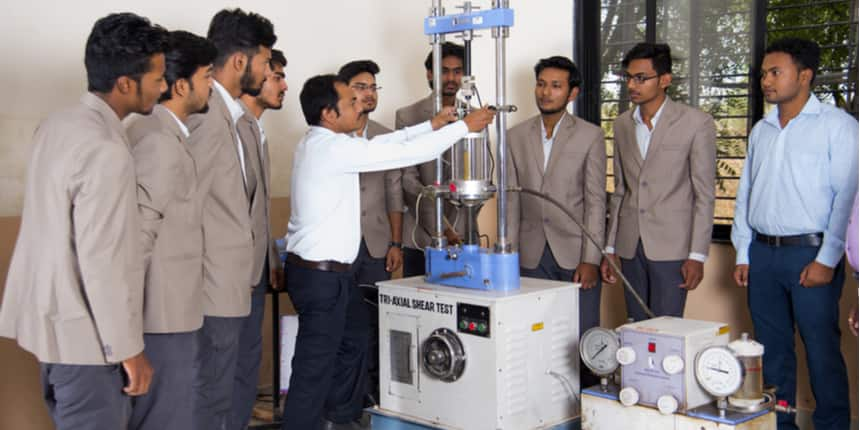Repositioning engineering to be a repository of interdisciplinary knowledge
Team Careers360 | November 6, 2021 | 10:40 AM IST | 3 mins read
Engineering education, from BTech to research, must be revamped to encourage critical thinking, interdisciplinary training and application.

By T Nagarajan & Santhi Natarajan
Global markets see technology as the deciding factor in all disciplines, which is the true seed for competitions and collaborations. This has forced nations across the world to realign their vision statements, prioritizing STEM (science, technology, engineering, mathematics) as a key game-changer. This proposed growth trajectory demands engineers with critical “interdisciplinary” knowledge, supplemented by a wide intellectual span rather than focused narrow knowledge groups. Repositioning engineering education to achieve the next growth phase shall ensure sustained economic practices and social well-being across nations.
As an interdisciplinary engineering intellect emerges as the need of the hour for nation-building, there still exists a striking gap in the engineering education structure. A conventional approach towards curriculum and content offerings across engineering disciplines needs serious restructuring, with strong emphasis on the following:
- Application and technology-specific research and development
- New interdisciplinary courses at the undergraduate level itself that connect emerging technologies with their applications, thereby equipping the future workforce with the necessary and sufficient knowledge and skillsets.
- Engineering research that focuses on transforming the new interdisciplinary knowledge and fundamental scientific and engineering discovery into products and solutions of importance to national growth.
- Innovation is the key outcome where smart engineering works result in the emergence of smart products.
- Entrepreneurship training that enables engineers of the future to be leaders with vision and with the power of decision making.
This holy grail is sure to replace and reposition engineers in key positions of economic and developmental leadership, where they form and share the vision of the nation’s growth in realistic and true spirit.
Also Read | Anna University’s Tamil-medium BTech courses see low enrolment, no growth
Road Block: Low funds for engineering research
The stagnant funding opportunities from the state and central governments towards engineering research is a major hurdle. With artificial intelligence (AI) emerging as the latest paradigm of engineering solutions, the advancements in computing technologies seem to support and complement the computing requirements of such high profile and huge datasets associated with the AI applications.
Also Read | Management: Who is the online MBA degree for and how does it work?
The basic science research fraternity also has started embracing the AI-centric platforms and solutions for their high-performance offerings. The existing funding schemes tend to overlook the initial huge establishment costs of high profile engineering research laboratories, which is quintessential for interdisciplinary research. Joint funding from the government, public and private sector shall help in overcoming the funding shortage, and in developing tangible solutions that all stakeholders can jointly contribute to.
Also Read | Why JEE, NEET toppers appear on multiple coaching institutes’ ads
Talent attraction, retention
The Institutes of National Importance produce the best minds at the undergraduate level, thanks to the generous funding from the central government and the unparalleled legacy created jointly by the esteemed faculty and student group. But there is an attrition of talent as we move from public institutions to private institutions, due to compromise in quality and lack of funding. Over the last two decades, as the industry started accommodating the engineering workforce as mere commodities for billing, the key outcomes of engineering education also deteriorated as it focused on generating a workforce with minimalistic skillsets. Barring the premium tier-1 institutions, the remaining lack the vision to produce graduates who are critical thinkers, problem solvers and skilled to excel in the fast-evolving technology landscape. Critical thinking is needed, as we look forward to revamping engineering education, towards building the best faculty and students.
Also Read | How an Indian engineer became famous for his photographs of outer space
The engineering fraternity can then share a common vision towards building an intellectual community that can comprehend complex engineering problems in applications and convert them into tangible innovative solutions, from an interdisciplinary perspective. The fraternity shall reflect in its every action, its ethical and social commitment to the causes of national development, while inclusive enough in terms of diversity, quality and agility. Such an ecosystem shall attract the best of talent from faculty groups and student groups, appreciating and respecting the cultural and intellectual heterogeneity.
Dr. T. Nagarajan is head and Dr. Santhi Natarajan an associate professor in the Department of Computer Science and Engineering – Research at Shiv Nadar University, Chennai
Follow us for the latest education news on colleges and universities, admission, courses, exams, research, education policies, study abroad and more..
To get in touch, write to us at news@careers360.com.
Next Story
]Haryana universities teaching BTech in Hindi informally can now make it ‘official’
AICTE has allowed three Haryana universities to teach and hold exams for BTech in mechanical, computer science and electrical engineering in Hindi. For many students, they were already teaching in Hindi
Pritha Roy Choudhury